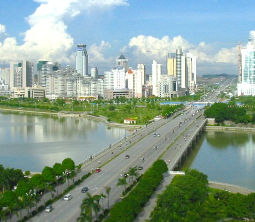Nanjing (meaning southern capital) is one of the six ancient capitals of China, situated at the south bank of the  lower reaches of the Yangtze River. Today, Nanjing is the capital of Jiangsu province and covers an area of 860 square kilometers with a population of more than 5 million. lower reaches of the Yangtze River. Today, Nanjing is the capital of Jiangsu province and covers an area of 860 square kilometers with a population of more than 5 million.
Various dynasties have made Nanjing their base. The most famous of these periods is when Nanjing was the capital of China; during the Ming Dynasty between 1368 and 1644 and the establishment of the People's Republic of China in the early 20th Century. Many of the city's historical sites are date back to these periods and Sun Yat-sen's Mausoleum and the Ming Tombs are examples of the wealth of culture existing in this ancient city.
Today, the city is renowned for being an educational and cultural center, with a large student (foreign and native Chinese) population. Nanjing is a pretty place, with tree- lined streets, hills and lakes, making the intense heat of east China's summers more bearable. The pace of life here is slower than many other Chinese cities and Nanjing seems quite conservative in comparison to the brash modernity of neighboring Shanghai. Indeed the local's mantra "man zou" (go slow) is a reflection of the cautious and reserved attitude of many of the city's residents.
Like many Chinese cities however, the charm of this place is being threatened. The developers have moved in and the old streets and classical buildings are being torn apart to make way for expressways and skyscrapers.
For the time being, Nanjing remains a charming city to spend a few days in, absorbing some history and relaxing in the laid back atmosphere before it disappears altogether. |
